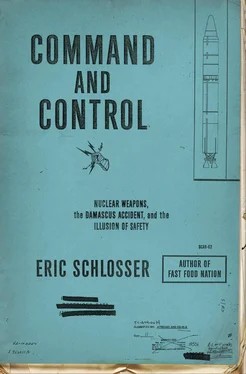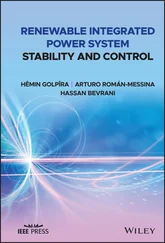Much like China, India for many years embraced a strategy of minimum deterrence, building a small arsenal of weapons and vowing to use them only in retaliation. But India may be moving toward a more aggressive strategy, too. Pakistan has doubled the size of its arsenal since 2006. It now has about 100 nuclear weapons. It is the only nuclear power whose weapons are entirely controlled by the military. And the Pakistan army has not ruled out using them first, even in response to an Indian attack with conventional weapons. To make that sort of deterrent credible, the authority to use tactical nuclear weapons has probably been given to lower-level Pakistani officers, much like the United States once predelegated it to NATO commanders on the front lines.
Instead of making a war between India and Pakistan less likely, nuclear weapons may have the opposite effect. For most of the Cold War, the status quo in Europe, the dividing line between East and West, was accepted by both sides. The border dispute in South Asia is far more volatile, with Pakistan seeking to dislodge India from Kashmir. Pakistan’s nuclear weapons have allowed it to sponsor terrorism against India, a much larger and more powerful nation, without fear of retaliation. Since the early 1990s the two countries have come close to nuclear war about half a dozen times, most recently in November 2008, after suicide attacks on India’s largest city, Mumbai.
The security of Pakistan’s nuclear arsenal is now threatened not only by an attack but also by radical Islamists within the country seeking to steal weapons. The internal and external threats place competing demands on Pakistan’s command-and-control system. To protect against theft, the weapons should be stored at a handful of well-guarded locations. But to safeguard against an Indian surprise attack, the weapons should be dispersed to numerous storage sites. Pakistan has most likely chosen the latter approach. Although the warheads and bombs are said to be stored without their nuclear cores, the dispersal of Pakistan’s weapons makes it a lot easier for terrorists to seize one.
Islamic militants staged a bold attack on the headquarters of the Pakistan army in October 2009. They wore military uniforms, used fake IDs, penetrated multiple layers of security, and held dozens of hostages for almost a full day. The head of the Strategic Forces Command, responsible for Pakistan’s nuclear arsenal, worked at that headquarters. Another attack penetrated a naval aviation base outside Karachi in May 2011. Most of Pakistan’s nuclear weapon storage facilities were built in the northwestern part of the country, as far as possible from India, to extend the warning time of a missile attack and to make a conventional attack on them more difficult. Unfortunately, that means the nuclear storage sites are located near the border with Afghanistan, Pakistan’s lawless tribal areas, and the heart of its radical Islamist movement.
• • •
MOST OF THIS BOOK has been devoted to stories of accidents, miscalculations, and mistakes, tempered by a great deal of personal heroism. But one crucial fact must be kept in mind: none of the roughly seventy thousand nuclear weapons built by the United States since 1945 has ever detonated inadvertently or without proper authorization. The technological and administrative controls on those weapons have worked, however imperfectly at times — and countless people, military and civilian, deserve credit for that remarkable achievement. Had a single weapon been stolen or detonated, America’s command-and-control system would still have attained a success rate of 99.99857 percent. But nuclear weapons are the most dangerous technology ever invented. Anything less than 100 percent control of them, anything less than perfect safety and security, would be unacceptable. And if this book has any message to preach, it is that human beings are imperfect.
A retired Strategic Air Command general told me about the enormous, daily stress of his job during the Cold War. It involved, among other things, managing the nuclear command-and-control system of the United States. New codes had to be regularly obtained from the National Security Agency and distributed to missile sites, bombers, submarines. False alarms from NORAD had to be considered and dismissed, Soviet military transmissions carefully analyzed, their submarines off the coast tracked. Thousands of things seemed to be happening in the system at once, all over the world, subtly interconnected, and at any moment something could go terribly wrong. He compared the job to holding an angry tiger by the tail. And like almost every single Air Force officer, weapon designer, Pentagon official, airman, and missile maintenance crew member whom I interviewed about the Cold War, he was amazed that nuclear weapons were never used, that no major city was destroyed, that the tiger never got loose.
The challenges that the United States has faced in the management of its arsenal should give pause to every other nation that seeks to obtain nuclear weapons. This technology was invented and perfected in the United States. I have no doubt that America’s nuclear weapons are among the safest, most advanced, most secure against unauthorized use that have ever been built. And yet the United States has narrowly avoided a long series of nuclear disasters. Other countries, with less hard-earned experience in the field, may not be as fortunate. One measure of a nation’s technological proficiency is the rate of industrial accidents. That rate is about two times higher in India, three times higher in Iran, and four times higher in Pakistan than it is in the United States. High-risk technologies are easily transferred across borders; but the organizational skills and safety culture necessary to manage them are more difficult to share. Nuclear weapons have gained allure as a symbol of power and a source of national pride. They also pose a grave threat to any country that possesses them.
In recent years an international movement to abolish nuclear weapons has arisen from an unlikely source: the leadership of America’s national security establishment during the Cold War. In January 2007, two former Republican secretaries of state — George Shultz and Henry Kissinger — along with two prominent Democrats — former Secretary of Defense William J. Perry and Sam Nunn, the former chairman of the Senate Armed Services Committee — wrote an op-ed for the Wall Street Journal that spelled out their goal: “A World Free of Nuclear Weapons.” Sidney Drell had given the group not only technical guidance but also encouragement to take a bold stance. “The world is now on the precipice of a new and dangerous nuclear era,” they warned. The end of the Cold War, the threat of nuclear terrorism, and the spread of nuclear weapons to countries like North Korea rendered long-standing notions of deterrence obsolete. The use of nuclear weapons had become more, not less, likely. And the two nations that control about 90 percent of those weapons — the United States and Russia — had an obligation to remove their missiles from hair-trigger alert, minimize the risk of accidents, reduce the size of their arsenals, and pursue abolition with the collaborative spirit that reigned, briefly, at the 1986 Reykjavik summit.
The campaign to eliminate nuclear weapons was subsequently endorsed by a wide variety of former Cold Warriors, including Robert McNamara, Colin Powell, and George H. W. Bush. It became part of America’s foreign policy on April 5, 2009. “Some argue that the spread of these weapons cannot be stopped, cannot be checked — that we are destined to live in a world where more nations and more people possess the ultimate tools of destruction,” President Barack Obama said that day, during a speech before a crowd of twenty thousand people in Prague. “Such fatalism is a deadly adversary, for if we believe that the spread of nuclear weapons is inevitable, then in some way we are admitting to ourselves that the use of nuclear weapons is inevitable.” Obama committed his administration to seeking “a world without nuclear weapons,” warning that the threat of global nuclear war had gone down but the risk of a nuclear attack had gone up. Later that year, the United Nations Security Council voted to support abolition. The idealistic rhetoric at the U.N. has not yet been followed, however, by the difficult steps that might lead to the elimination of nuclear weapons: passage of the Comprehensive Nuclear Test Ban Treaty by the U.S. Senate; major reductions in the Russian and American arsenals; arms control talks that include China, India, Pakistan, North Korea, and Israel; strict rules on the production and distribution of fissile materials; and harsh punishments for countries that violate the new international norms.
Читать дальше












